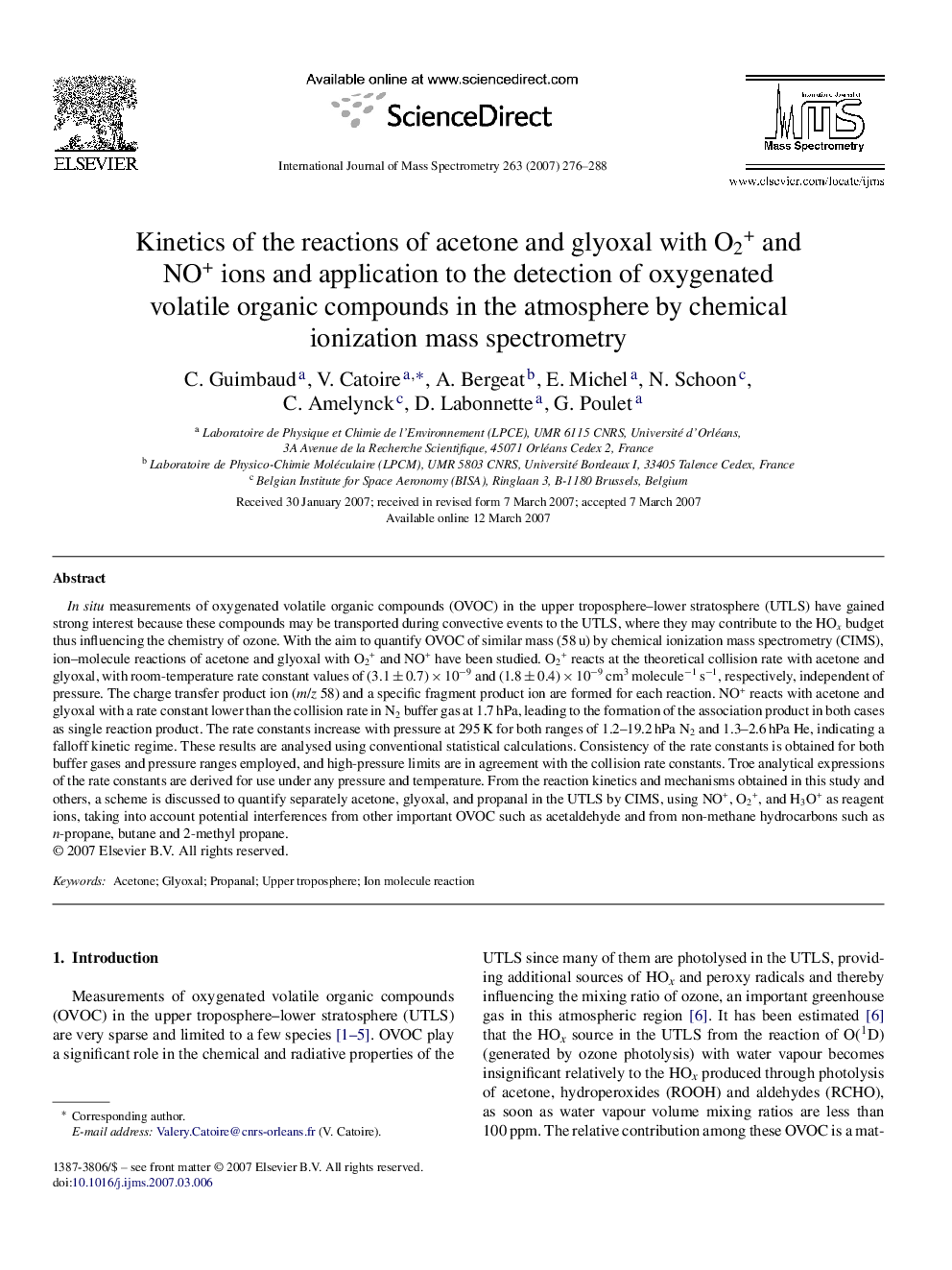| کد مقاله | کد نشریه | سال انتشار | مقاله انگلیسی | نسخه تمام متن |
|---|---|---|---|---|
| 1194942 | 1492373 | 2007 | 13 صفحه PDF | دانلود رایگان |

In situ measurements of oxygenated volatile organic compounds (OVOC) in the upper troposphere–lower stratosphere (UTLS) have gained strong interest because these compounds may be transported during convective events to the UTLS, where they may contribute to the HOx budget thus influencing the chemistry of ozone. With the aim to quantify OVOC of similar mass (58 u) by chemical ionization mass spectrometry (CIMS), ion–molecule reactions of acetone and glyoxal with O2+ and NO+ have been studied. O2+ reacts at the theoretical collision rate with acetone and glyoxal, with room-temperature rate constant values of (3.1 ± 0.7) × 10−9 and (1.8 ± 0.4) × 10−9 cm3 molecule−1 s−1, respectively, independent of pressure. The charge transfer product ion (m/z 58) and a specific fragment product ion are formed for each reaction. NO+ reacts with acetone and glyoxal with a rate constant lower than the collision rate in N2 buffer gas at 1.7 hPa, leading to the formation of the association product in both cases as single reaction product. The rate constants increase with pressure at 295 K for both ranges of 1.2–19.2 hPa N2 and 1.3–2.6 hPa He, indicating a falloff kinetic regime. These results are analysed using conventional statistical calculations. Consistency of the rate constants is obtained for both buffer gases and pressure ranges employed, and high-pressure limits are in agreement with the collision rate constants. Troe analytical expressions of the rate constants are derived for use under any pressure and temperature. From the reaction kinetics and mechanisms obtained in this study and others, a scheme is discussed to quantify separately acetone, glyoxal, and propanal in the UTLS by CIMS, using NO+, O2+, and H3O+ as reagent ions, taking into account potential interferences from other important OVOC such as acetaldehyde and from non-methane hydrocarbons such as n-propane, butane and 2-methyl propane.
Journal: International Journal of Mass Spectrometry - Volume 263, Issues 2–3, 1 June 2007, Pages 276–288